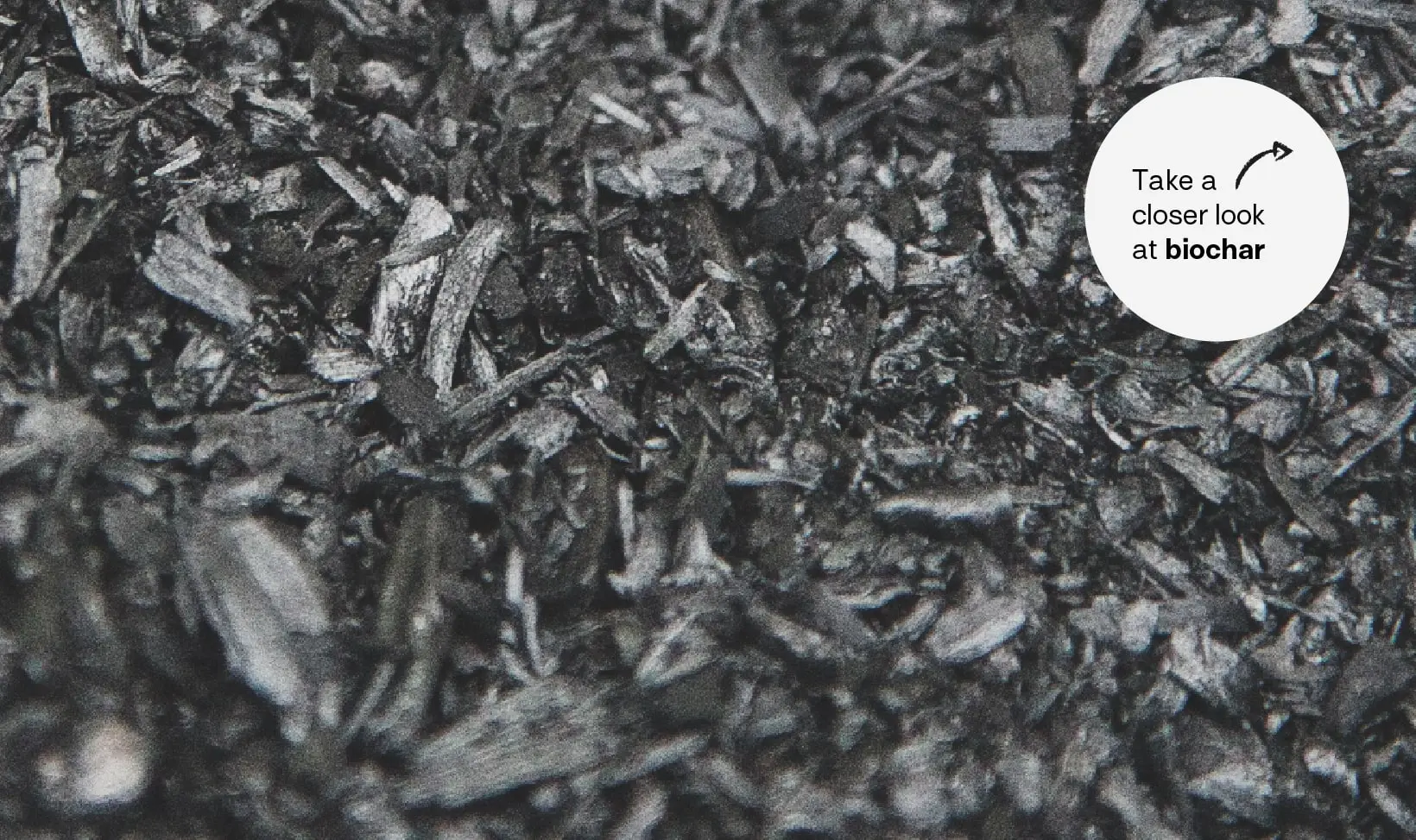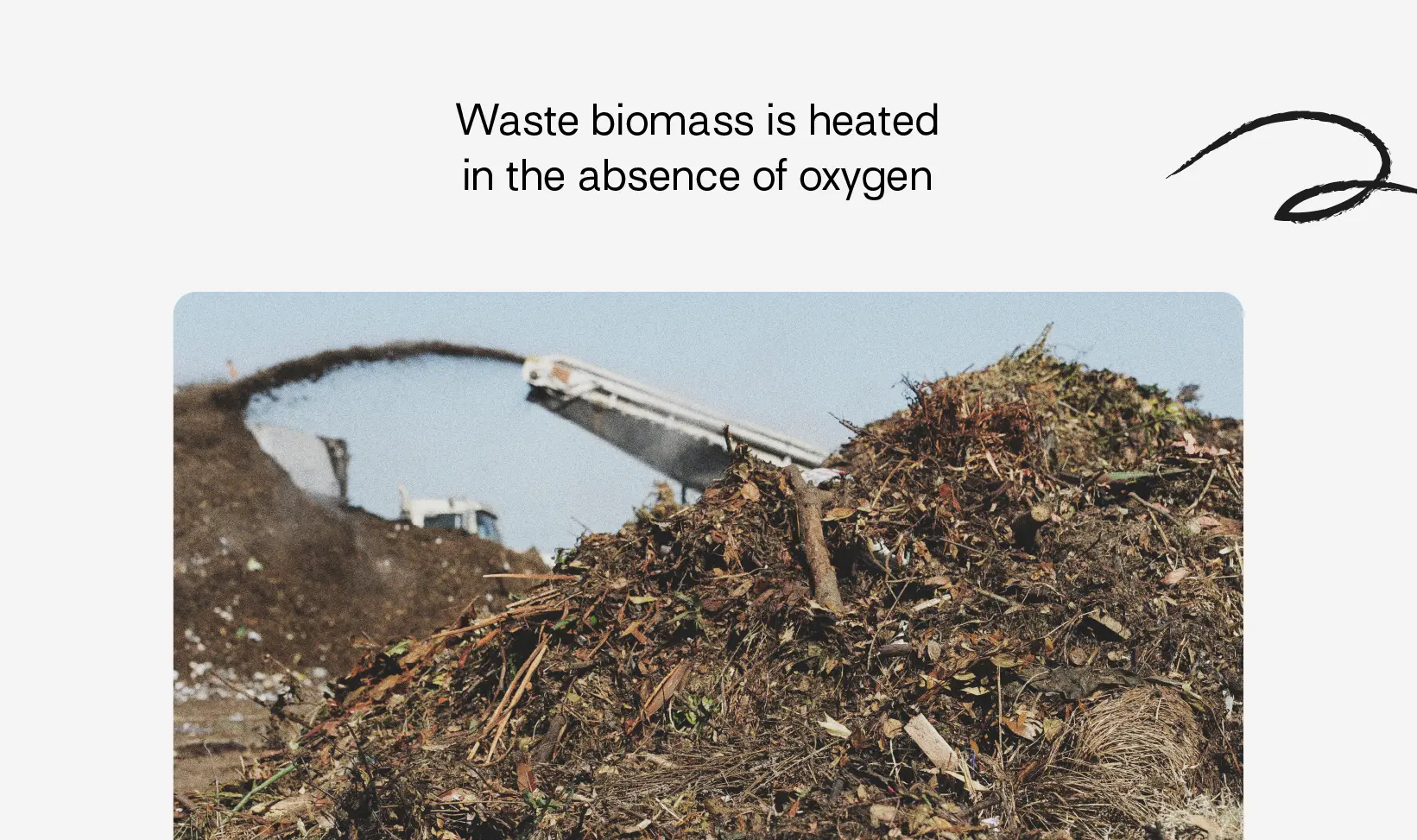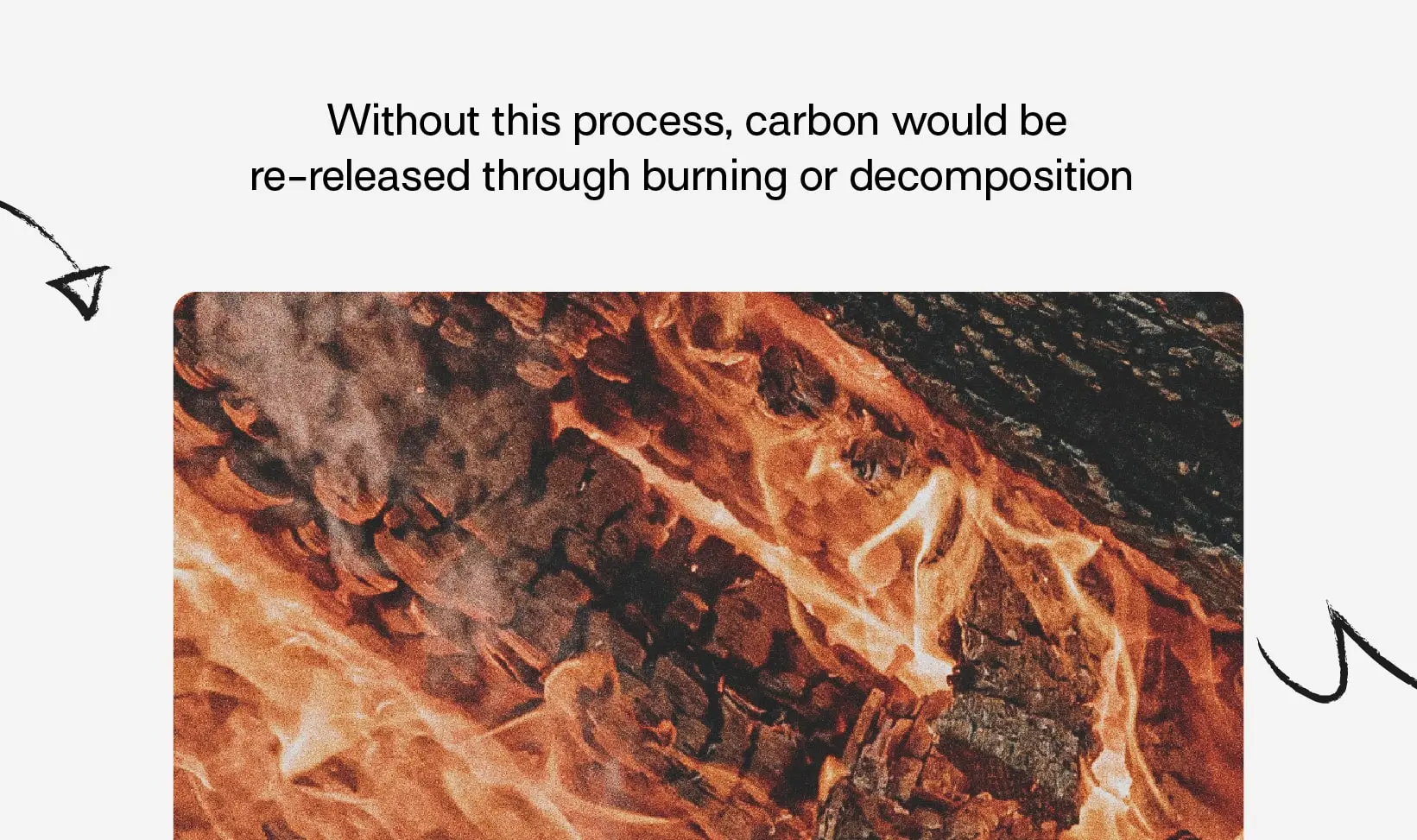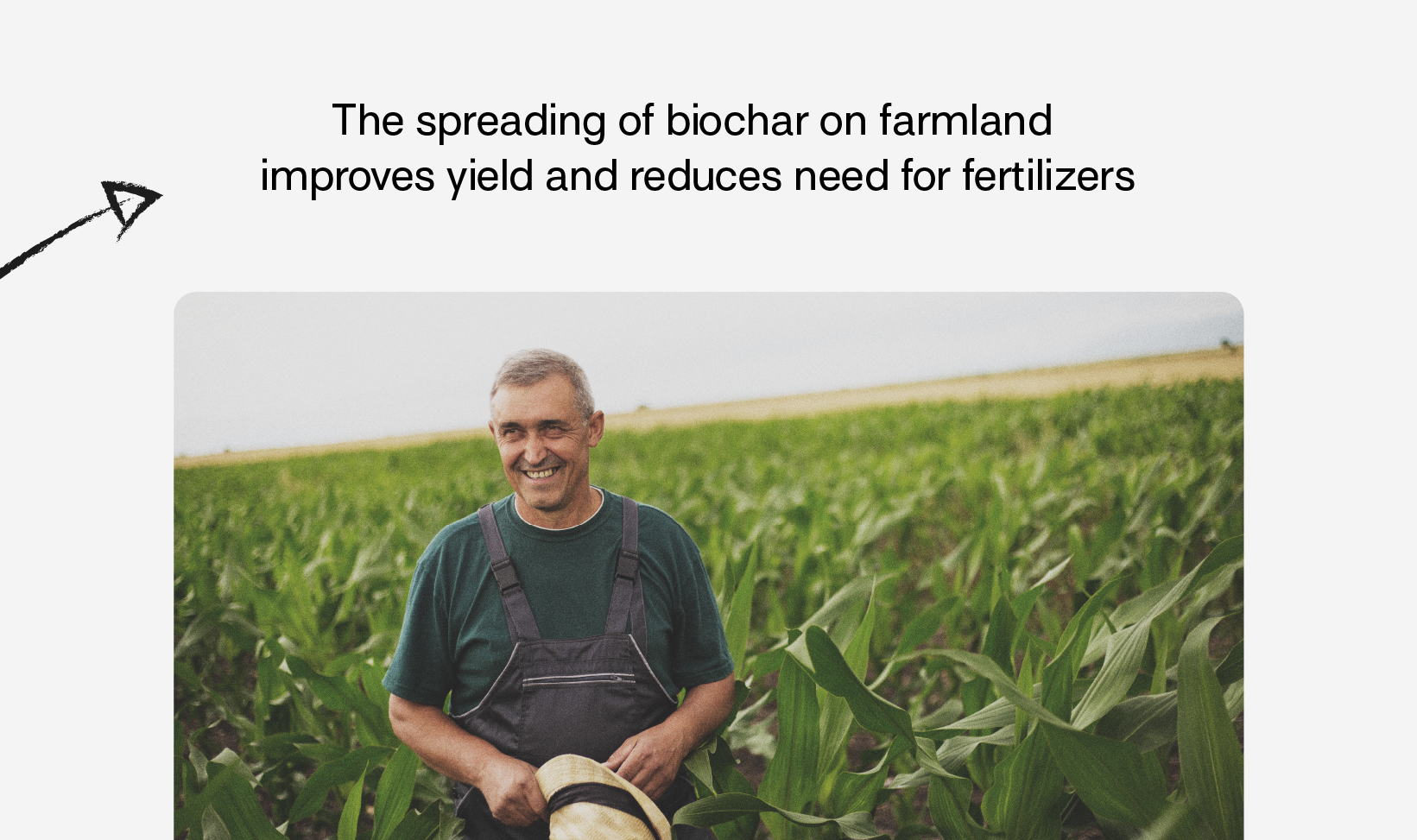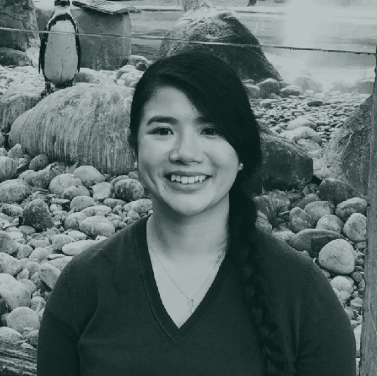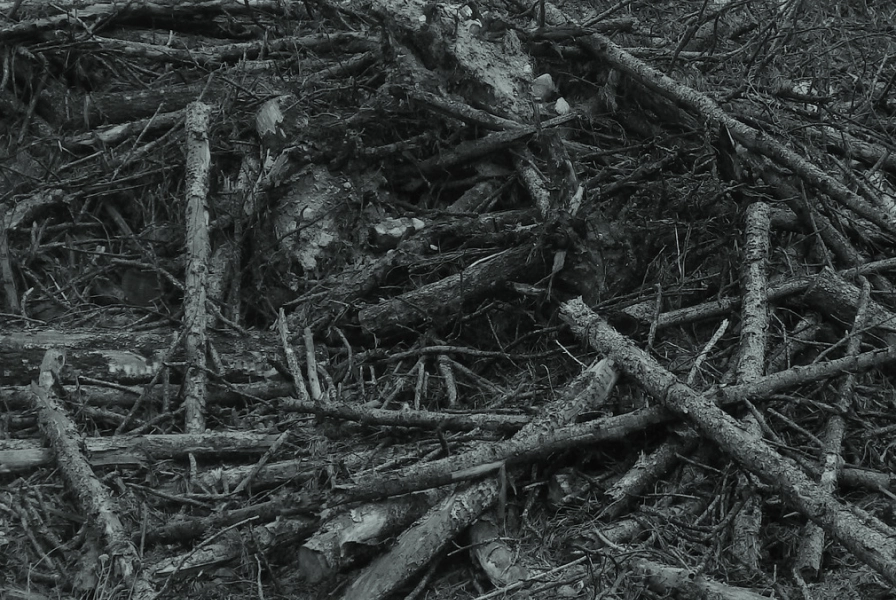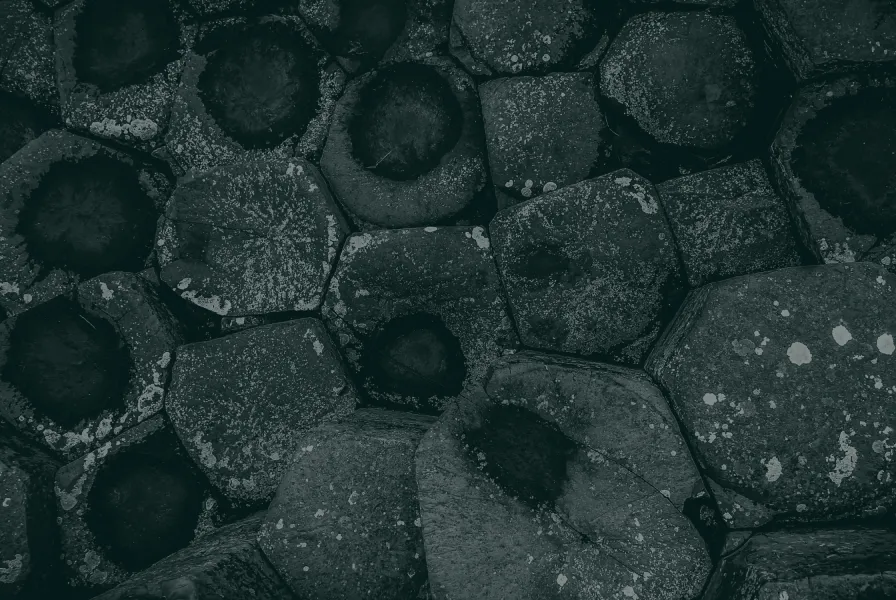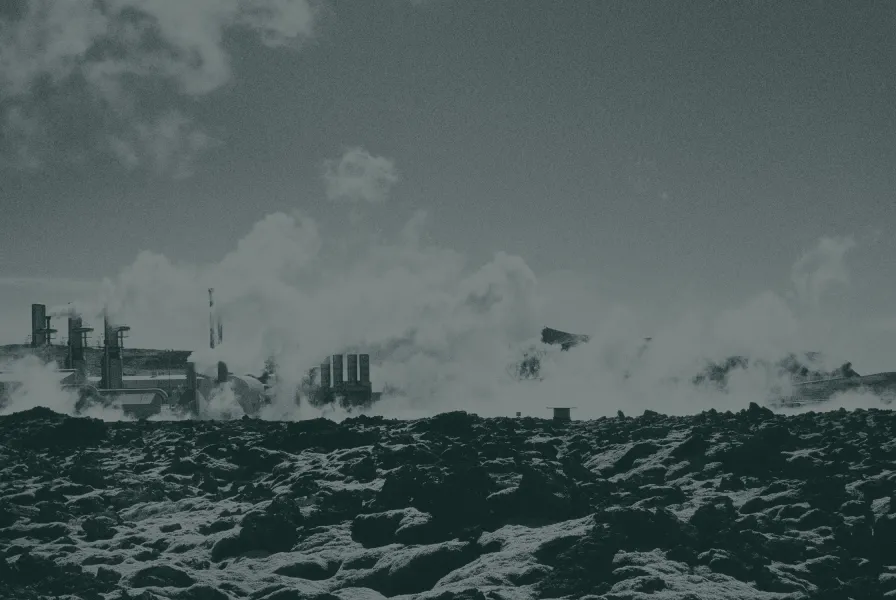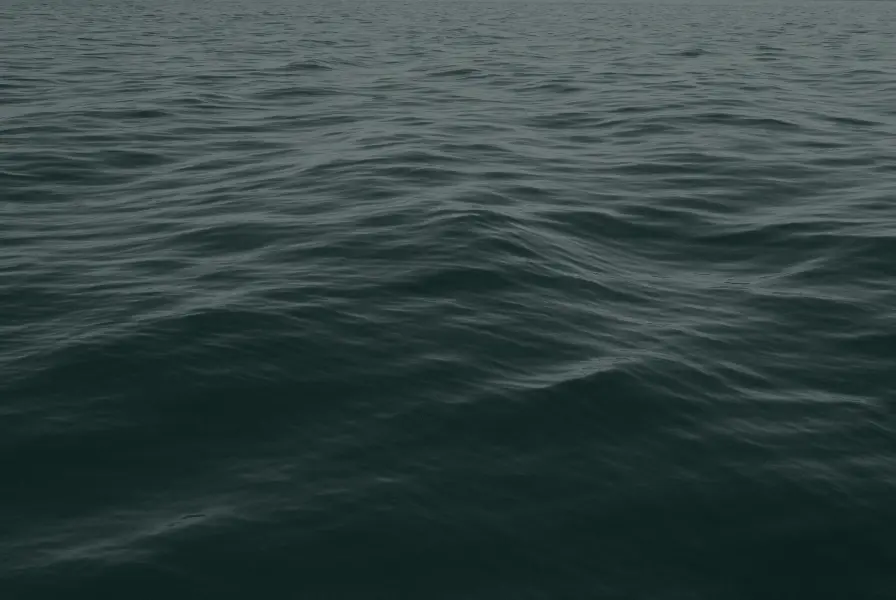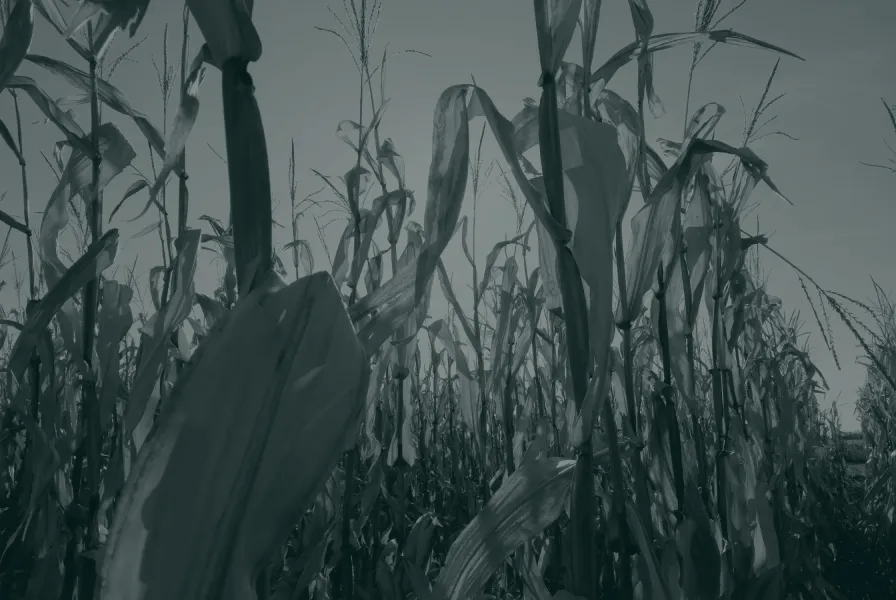Overview
Biochar is charcoal-like material rich in stable carbon. It is produced by heating biomass in an oxygen-limited environment in a process called pyrolysis. It is most commonly used as soil amendment in agriculture and horticulture.
The feedstock to produce biochar is typically waste biomass. This biomass contains temporarily stored carbon that was removed from the atmosphere by plants through photosynthesis. Without undergoing the pyrolysis process, this carbon would be re-released through the burning or decomposition of waste biomass. While biochar itself could also be burned in the presence of oxygen (as charcoal can be), the application and mixing with soils prevents this from ever happening.
Furthermore spreading of biochar on farmland soil brings significant additional co-benefits, such as yield improvements and reduced need for fertilizers.
